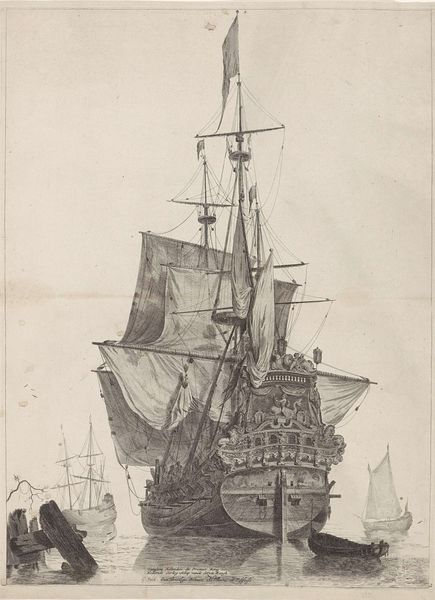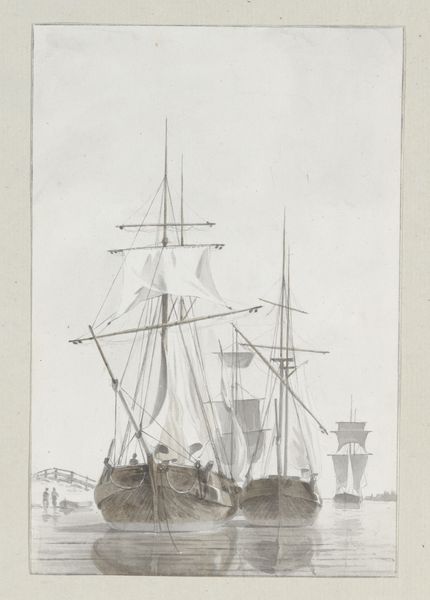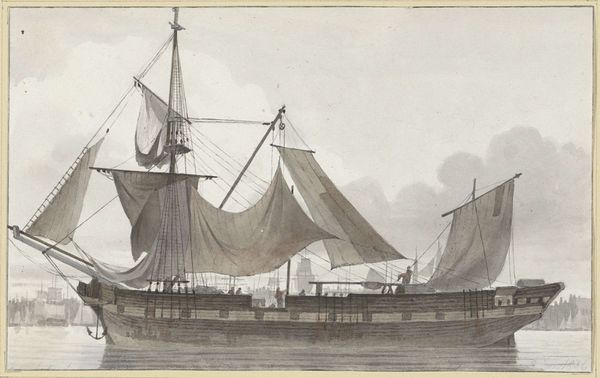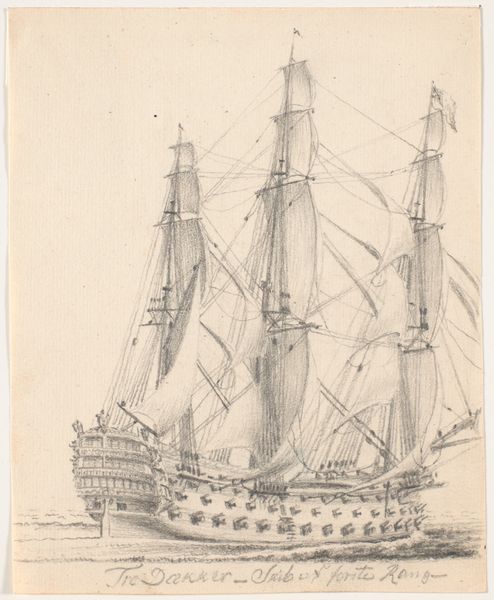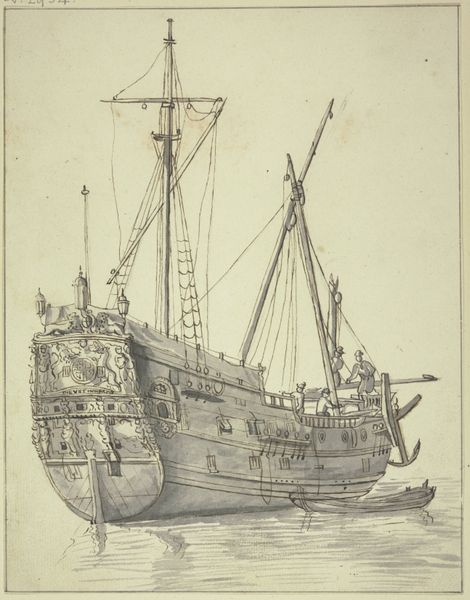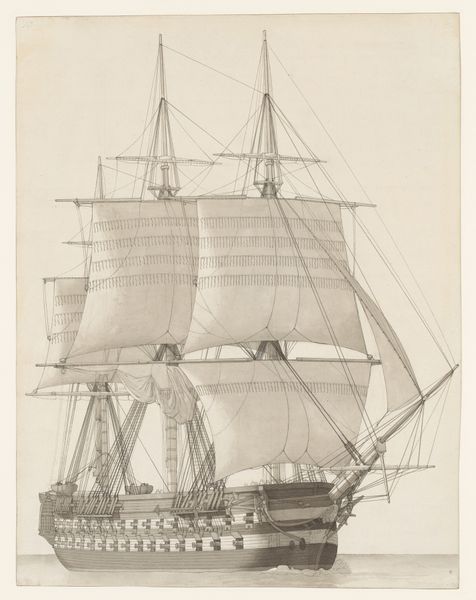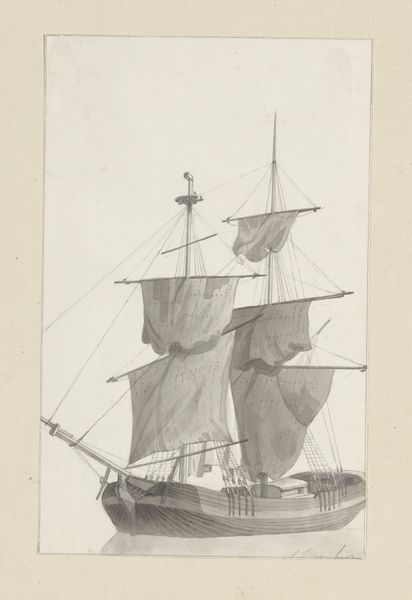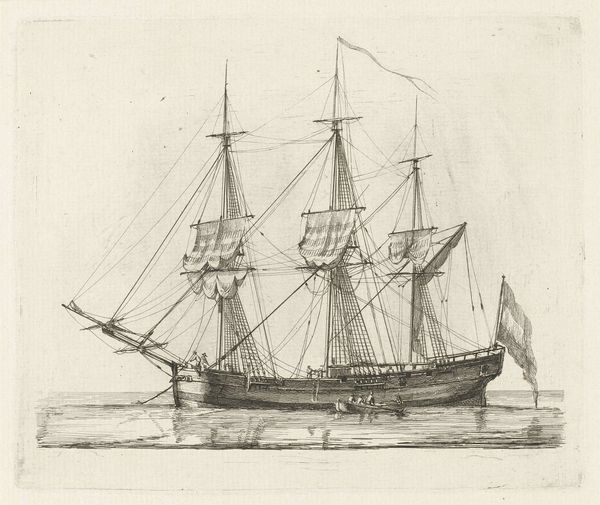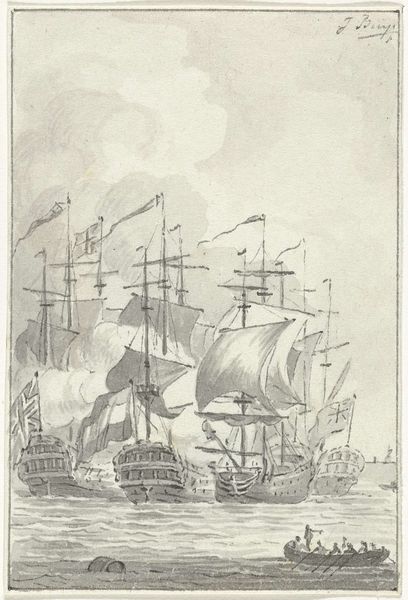
drawing, paper, watercolor, ink
#
pencil drawn
#
drawing
#
landscape
#
paper
#
watercolor
#
ink
#
realism
Dimensions: height 189 mm, width 121 mm
Copyright: Rijks Museum: Open Domain
Editor: This drawing, titled "Zeilschip van voren gezien in een houthaven," or "Sailing Ship Seen from the Front in a Wood Harbor," created sometime between 1820 and 1872 by Hendrik Abraham Klinkhamer, uses ink, watercolor and pencil on paper. I’m really struck by how the ship looms large, almost monumental. How do you interpret this work? Curator: From a materialist perspective, let’s consider the production of this image. Ink, watercolor, pencil and paper, all relatively accessible materials even then. This suggests a certain intention behind the work itself. Was this meant as a preliminary sketch? Also, consider the subject. A sailing ship implies trade, movement of goods, and access to different materials. Editor: That's interesting, I hadn't really thought about the implications of depicting a sailing ship specifically. Do you think the choice of materials reflects the social context of the piece at all? Curator: Absolutely. The ship, in its impressive size, dwarfs the smaller boats. Is Klinkhamer suggesting something about industrial development versus individual craftsmanship? The use of these specific drawing tools further emphasizes his commentary of the value surrounding such development during his time. Do you notice how labor isn't depicted at all, other than through its absence? Editor: You're right, there's no visible activity. It's almost as if the ship exists in isolation, devoid of the human effort that built and operates it. I am starting to think more about the wood logs too: timber as one of the primary resources of the 19th century, fuel of capitalism, a raw commodity of great social importance during the period. Curator: Precisely. Thinking through materials, techniques, and context can unveil layers of meaning often overlooked in formal art analysis. What a rich learning opportunity! Editor: I’ve definitely gained a new appreciation for looking beyond the immediate image, understanding the making process, the materials themselves, and the economic elements in understanding such work!
Comments
No comments
Be the first to comment and join the conversation on the ultimate creative platform.
